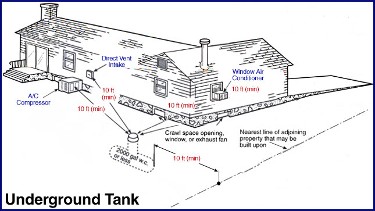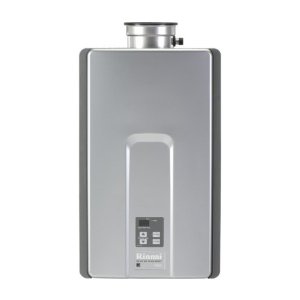Take advantage of these tips to keep your home safe while using propane gas. McMinnville Gas Inc. Propane Gas Company in McMinnville, Oregon, offers residential propane procedures.
General Tips
To readily recognize a leak know what propane smells like. Propane retailers have pamphlets with a scratch-and-sniff spot so that your entire family can recognize the smell. Propane leak detectors, similar to carbon monoxide detectors, are available. See your propane supplier to obtain one.
If you smell a leak, immediately evacuate everyone from the building, and call your local propane supplier or the fire department from an outside phone. Do not remain in the building, use the telephone or light switches, or try to determine the source of the leak by yourself.
Be aware of where gas service lines are located, especially when working in your yard.
Water can damage the internal safety mechanism in the controls of a gas appliance. If you suspect that your appliance gas controls may have gotten wet (because of flooding, for example), have a trained technician replace them immediately.
Heating Appliances
All furnaces collect lint and dirt and should be cleaned regularly. Contact your local propane supplier for information on proper cleaning, and follow the manufacturer’s instructions.
Water Heaters
Drain your tank periodically (until water runs clean, usually 2 to 3 gallons) to get rid of sediment buildup on the bottom of the tank.
Ranges
Have your unit serviced if the burner flame is not blue. The blue flame indicates complete combustion. A yellow flame means air inlets are clogged or burners need adjustment. Contact your propane supplier’s service department immediately.
Do not cover the oven bottom with foil. It can restrict air circulation.
Never use gas ranges for home heating.
Propane Tank – Installation Setbacks
The location of the container is important. Specific rules about the placement of liquefied petroleum gas containers can be found in the National Fire Protection Association’s (NFPA) Pamphlet 58. There are standards for ASME above ground containers, ASME underground containers, and DOT cylinders.
One of the most important dimensions given is the distance to a source of ignition. In most cases, this should be at least 10 feet. Verify that the containers you install are properly located in accordance with NFPA-58. Also, verify that the container location is accessible for safe filling from the bulk delivery truck.
Note 1– The relief valve, filling connection, and liquid level gauge vent connection at the container must be at least 10 feet from any exterior source of ignition, openings into direct-vent appliances, or mechanical ventilation air intakes.
Note 2– No part of an underground tank shall be less than 10 feet from an important building or line of adjoining property that may be built upon.
Be sure to check with your local fire and building authorities for additional installation requirements.
Rinnai Tankless Water Heaters
Why Tankless vs. a Traditional Tank?
Produce more hot water using less energy than the most efficient storage tank style heater. Tankless water heaters save energy, save space and save you money.
Endless Supply of Hot Water
Rinnai tankless water heaters heat the water you need, when you need it. Turning any water source into hot water on demand. Hot water is not limited to the amount a storage tank heater can hold. Whether you are washing the dishes, washing your clothes, or drawing a hot bath, Rinnai’s tankless water heater technology will give an endless supply of hot water to meet your lifestyle demands-even if you do them all at once!
Lower Energy Bills
Enjoy up to 40% energy savings with a Rinnai tankless water heater. Our units are designed to be highly efficient and only heat water when it is needed, a revolutionary advantage over inefficient tank-style heaters.
Longevity
2x Rinnai tankless water heaters have a typical life of up to 20 years. This can be twice as long as a tank style unit!
Space Savings
Traditional tank water heaters can take up to 16 square feet of valuable floor space. However, Rinnai tankless water heaters are about the size of a carry-on suitcase and can be installed on virtually any wall inside or outside of your home.
Clean, Fresh Water
Traditional tank-style water heaters can build up rust and scale inside their tank, where the hot water you use for bathing and drinking is stored. With Rinnai tankless water heaters you will experience fresh, clean water that is heated on demand, as it passes through the unit.
Sustainable and “Green”
Rinnai has earned ENERGY STAR approval by meeting the strict energy efficiency guidelines set by the U.S. Environmental Protection Agency and the Department of Energy, by using less energy and preventing greenhouse gas emissions.

